Personas are tricky concepts. They are subject to change by the most minute aspects of our most exterior selves: in our garments, slight facial movements, and in atmospheric shifts. Lauren Thompson employs distorted photographs with slow shutter effects to explore the underpinnings of our psyches and the personas that emerge from them.
Using herself as a conduit for her own subconscious energies, thoughts and emotions, Thompson “works from within,” urging us to consider our own multiplicities as she slips into these deep-dives with ease. While the artist finds comfort in film, photography, fashion, the visual arts in general–they’re all arguably mediums maintained through the veneers of inauthenticity and pretend-making, fostering self-consciousness and, at times, a kind of madness. It’s tricky to achieve honesty within a creative world meant to deceive.
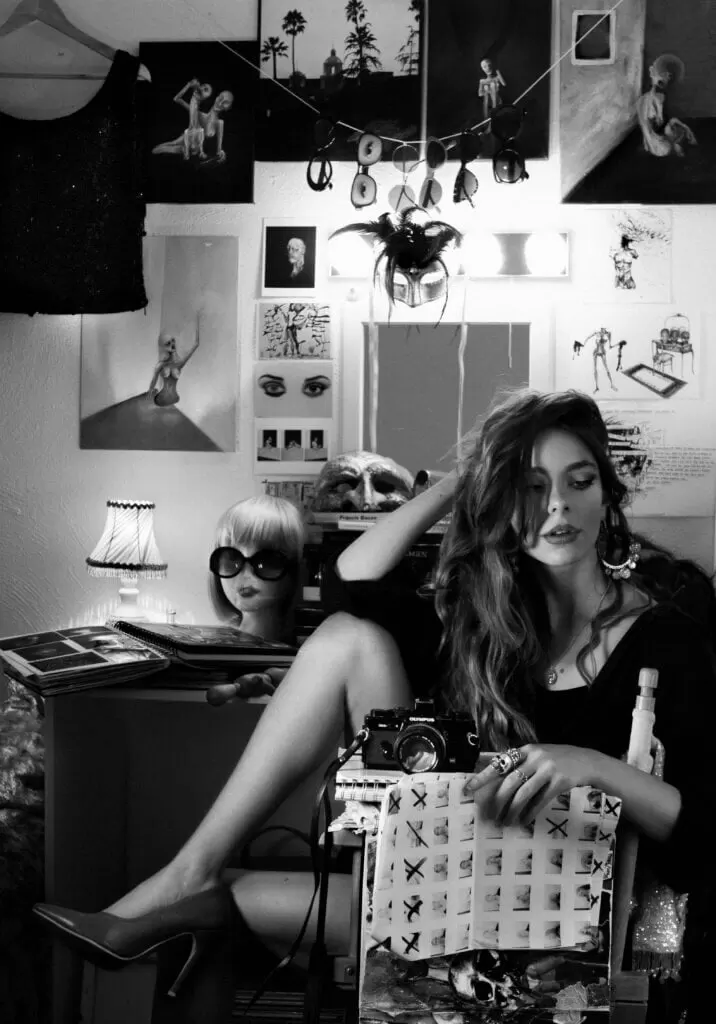
When something resonates with my internal world it sparks an idea which is experienced through some form of emotion, attitude or sensation.
Lauren Thompson
Thompson’s photographic work is often imbued with the velvet red, neon lights, ultraviolet, and high contrast black and white atmospheric tones of a fashion editorial, simultaneously exploring that which can be gruesome, elegant, harrowing, glamorous, vulnerable, confident, and sincere all at once.
We encounter ghost-like silhouettes, disjointed gestures, and trailing apparitions in her illustrated Diary and the photographic series She’s Not There, Untitled Works, and Lost Souls, where a captured gesture in one photograph is just as important as its preceding image. We can only see so far into that tightly enclosed space of Thompson’s figures, their dances, and the streams of consciousness that dictate them, but we are still prompted to practice empathy, to connect with these moods and to see ourselves and others accordingly. If given the proper attention, our viewing of her work can achieve a collective unfurling.


Q: What does your creative process look like? Where does it begin for you?
Lauren Thompson: When something resonates with my internal world it sparks an idea which is experienced through some form of emotion, attitude or sensation. These ideas aren’t fully formed until they find their way out through an artistic medium. With my photography and installation work, I think about what these feelings look like to me; what colour, movement, energy and texture is evoked by them. I work quite spontaneously. You can plan meticulously, but when you’re shooting there is a unique dynamic at play in the moment, between all the elements in the space, which I like to work with rather than against.
I use myself as a subject in a lot of my work, which is ironic because I’m not someone who rejoices in being in front of the camera for anyone else. Working alone gives me the freedom to experiment more uninhibitedly and work from within. At points when I didn’t feel I was able to fully express my ideas using standard techniques, experimentation lead me to distortion, which I do using a slow shutter to create multifaceted portraits.
I feel my self-portraits are my most honest and cathartic work as they give a face to something the naked eye cannot perceive. Although elements are staged, such as, what is worn and the setting I choose, once I’ve pushed the button and the shutter opens, I am lost in the moment and have no idea what will be born out of it. Looking back over the material is like looking into a fractured mirror and seeing fragments of the self looking back.
I choose and enhance what resonates with me. If I am photographing someone else, I don’t attempt to portray the inner workings of their psyche accurately, but I will use the same technique to catch a glimpse of duality which I feel conveys more than meets the eye. I often listen to music when creating as it holds immense power and emotion. It is a portal to the soul, and I find different tracks evoke different attitudes.
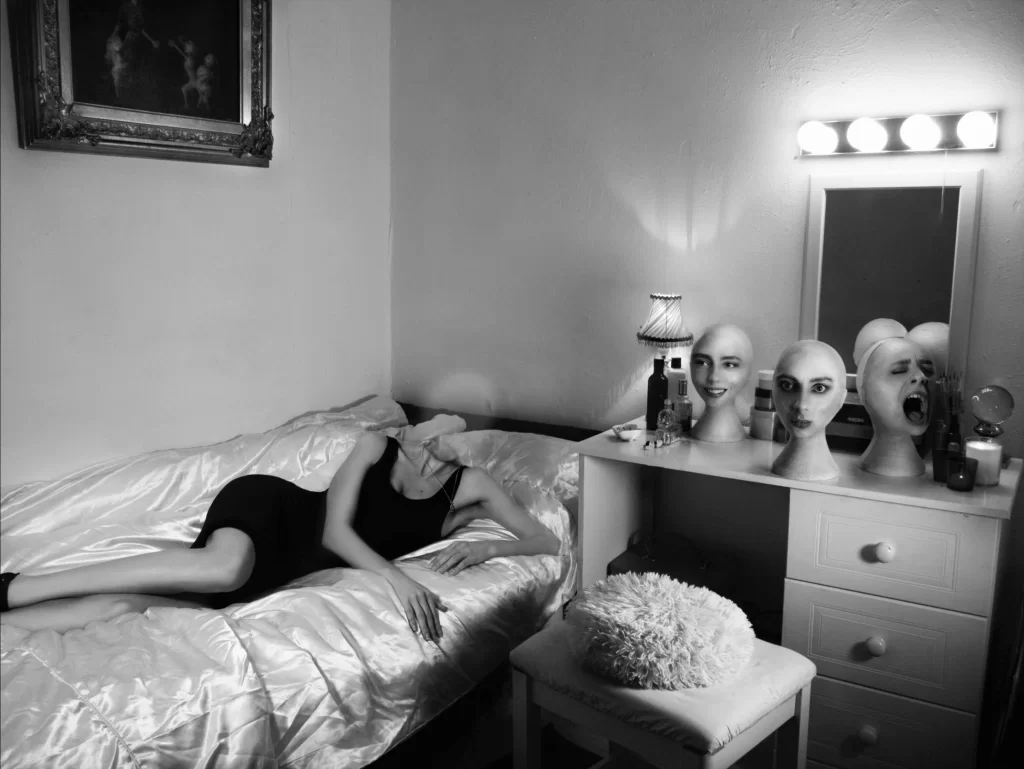
Q: What are your preferred mediums?
Lauren Thompson: Although I have an interest in exploring my ideas through many different creative mediums, my distorted portrait photography and installation work have become the most significant to me.
I don’t view individuals as being perpetually one thing and I like my art to reflect that. The camera, as a tool, enables me to realise my ideas visually, using colour, light and movement like brushstrokes to re-imagine my subjects and turn them, or myself, inside out.


Q: What roles do the personas and moods presented in your photography and films fulfill?
Lauren Thompson: My fascination with the persona and what lies beneath comes from my desire to uncover the truth and challenge perceptions. I’m interested in juxtapositions and the undercurrents that lie just beneath the thin veneer of life’s surface: the tiring smile of a celebrity on a chat show, their facade losing lustre; a woman in sunglasses alluding to an air of unattainable, effortless cool, breaking to pieces behind them; beautiful berries glowing, translucent and sumptuous in the sun, deceiving of their toxic nature.
In a world where the truth is often cloaked, whether it be by facades and lies created to protect the ego, or political corruption, truth is a rarity and I believe the arts are the most powerful way of connecting people to the truth. Growing up, I have been drawn to artists who, I feel, delve beneath the surface or highlight the concept of persona. Francis Bacon, David Lynch, and Cindy Sherman are three who stand out for me.
For as long as I can remember, I have created moods and atmospheres in my work and life. This was instilled in me at a young age by my parents who created an environment enriched with film, art and music. The arts romanticise and enhance my everyday life.
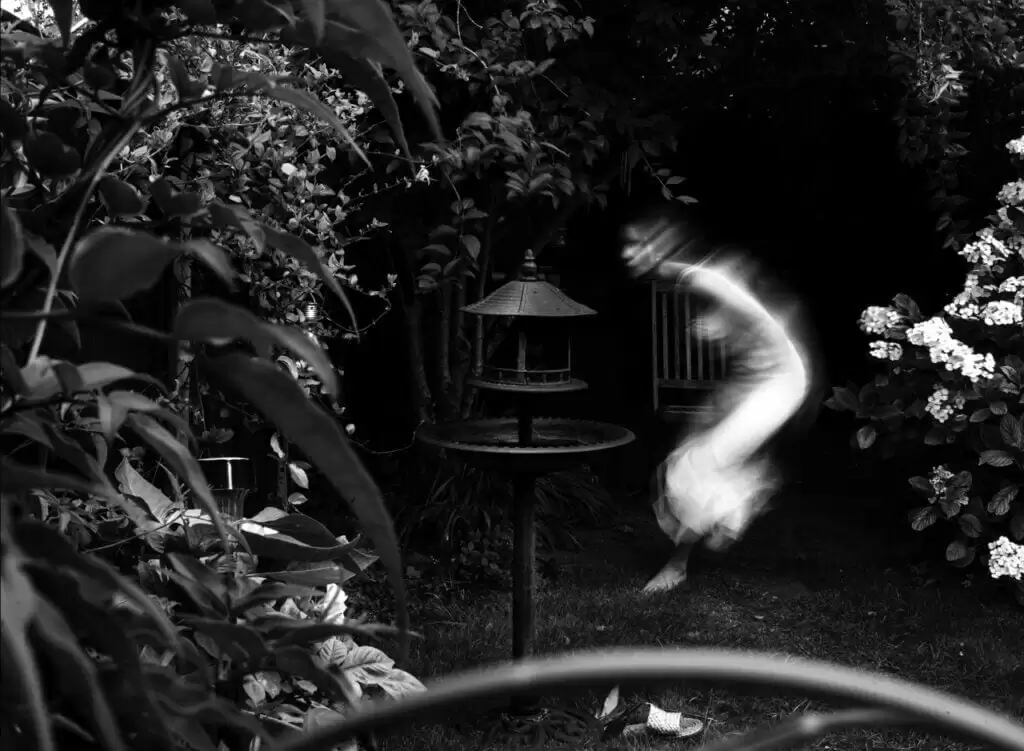
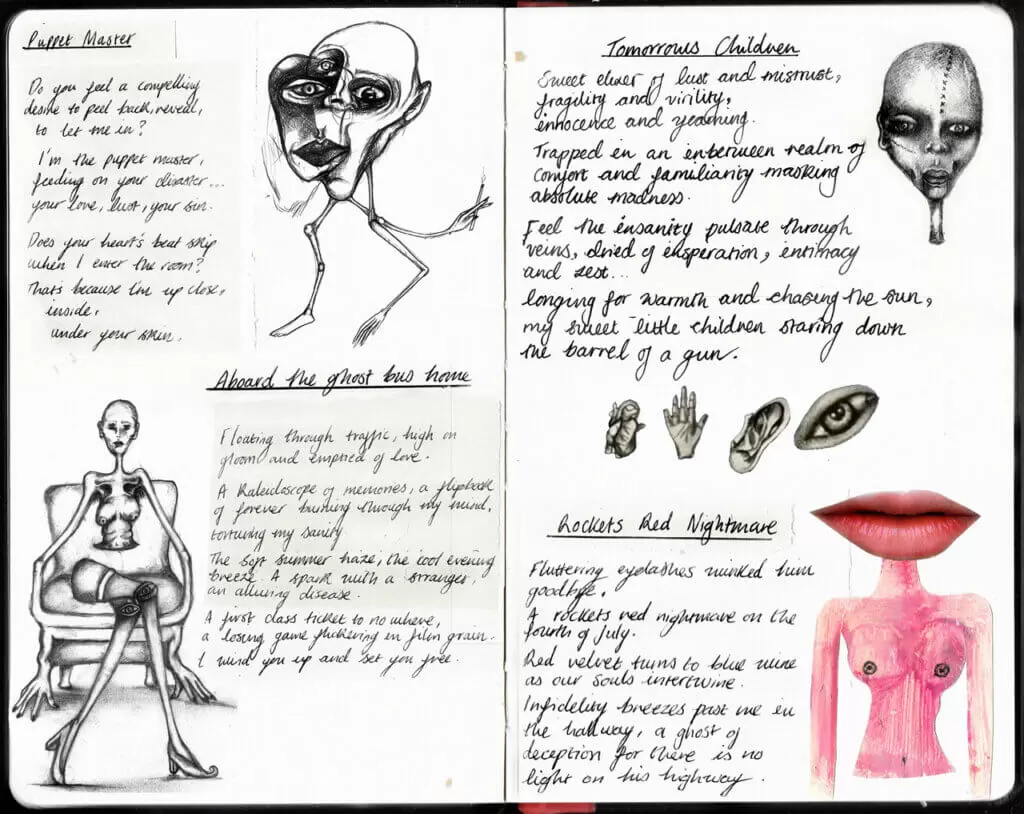
Q: How do fashion and film influence your work?
Lauren Thompson: I am influenced by film as a psychological medium. Film portrays fictional and real-life characters through actors pretending to be them. Costume and props are chosen, hair and makeup is done and attitudes are studied to create a believable persona. I take inspiration from elements of characters, as well as settings and moods that resonate with me, and like to channel them through some of my art. Take Twin Peaks, for instance…the mood is alive with dualities.
Fashion is an amazing form of expression which also plays a massive part in the persona. Different clothes can bring out different elements of the person wearing them and affect their attitude. I am not drawn to the stiff and lifeless side of fashion in which models wear blank expressions and look bored. I prefer to see the garments being brought to life through energy, movement and expression. I am currently working on a fashion-art series.


Q: How do you know when a project is finished?
Lauren Thompson: I go with a gut feeling. Sometimes, I feel I could go on endlessly tweaking things here and there but I try not to play with the toy until it breaks and kill the spontaneous energy.
Q: Which of your works resonate the most with you? Do you have a favourite piece/ project/series?
Lauren Thompson: So far, the work which resonates most with me is my moving triptych, Model of a Psyche. It is a multifaceted installation showing a central figure being overwhelmed and disfigured by two opposing forces.
There are many individuals who are unable to verbalise their psychological pain, or feel they don’t have a justifiable reason for it. These feelings aren’t always valued in the same way as physical pain because they cannot be seen. With this work, I strive to create something visceral which gives a face to the invisible power of psychological pain.
Vulnerability can be mistaken for weakness and, as a result, people may feel the need to bury it and hide behind a persona. But it’s through truth and vulnerability that we are able to empathise and connect.
Q: What is the most rewarding aspect of being an artist?
Lauren Thompson: Striving to make something unique, which you hope will be lasting and continue to inspire people.
Q: What are the most challenging aspects?
Lauren Thompson: Starting out in an insanely competitive industry, in which you are a speck of dust and have to spend copious amounts of time working for free whilst people question you on what you’re really going to do with your life. Being an artist of any kind is often dismissed as a cop out of the real world, but choosing to pursue art as a career is not easy and it often means that for a long time it’s not going to be the main way you support yourself.
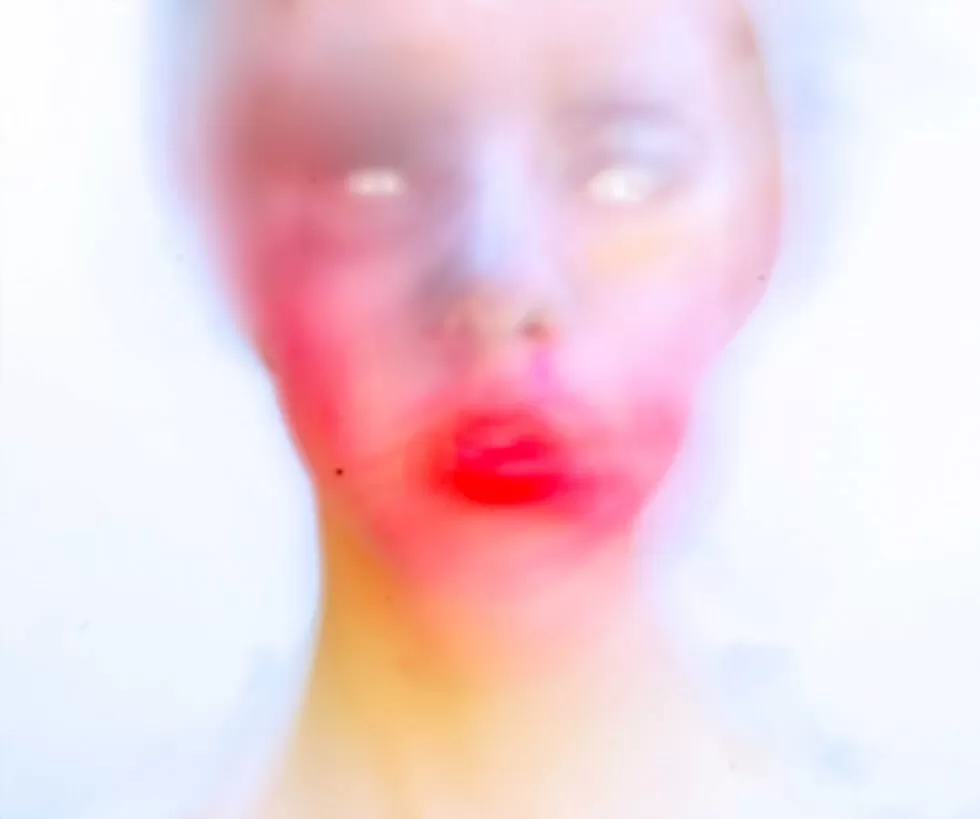
Q: What advice would you give emerging artists?
Lauren Thompson: In my opinion, art finds you; you have to create or you’ll implode. Once you know you’re serious about it and willing to devote your life to it, and all the hardship that comes with that, then I would say look within and get to know yourself. So much of what gets made is regurgitation or emulation.
That’s cool, and like tumbleweeds, we pick up strands of inspiration from the environment and art we’re exposed to and incorporate it into our own styles. But in order to roll forward and cover new ground, you have to come up with something unique. We are all one of a kind and have something original to bring to the world, so the best you can do is find and channel that inner truth through whatever you create. Life is too short to be a half-arsed version of someone else. Be yourself.
https://www.instagram.com/laurenthompsonstudio/
©2020 Lauren Thompson




